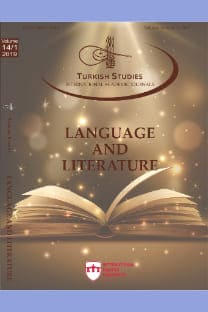“THE RAVEN”: AN ODYSSEY THROUGH NORSE MYTHOLOGY*
___
Bloom, H. (2008).Edgar Allan Poe. New York: Blooms Literary Criticism.C. S. (2006).Women in the Viking age: Death, life after death and burial customs(Unpublished master's thesis). Thesis / Dissertation ETD University of Oslo.
Daly, K. N., &Rengel, M. (2004).Greek and Roman mythology A to Z. New York: Facts on file.
Daly, K. N., &Rengel, M. (2010).Norse mythology A to Z. New York: Chelsea House.
Davidson, H. R. (1990).Gods and myths of northern Europe. London: Penguin Books.
Eudy, V. (2009).Myth and the Finite Sublime: A Study of Edgar Allan Poe’s Mythological Works(Master's thesis). The University of North Carolina at Asheville.
Fisher, B. F. (2008).The Cambridge introduction to Edgar AllanPoe. Cambridge: Cambridge University Press.
Foster, M. H., & Cummings, M. H. (2017).Asgard stories: Tales from Norse mythology. New Delhi: Kalpaz.
Gaiman, N. (2017).Norse mythology. New York: W. W. Norton &Company
Hamilton, E. (2003).Mythology: Edith Hamilton.
Hard, R.,&Rose, H. J. (2009).TheRoutledge handbook of Greek mythology: Based on H.J. Roses Handbook of Greek mythology. London: Routledge.
Koç, N. E. (2015). Identity Politics.International Journal of Media CultureandLiterature,1(2), 57-65. RetrievedJanuary 30, 2019, from http://dergipark.gov.tr/download/article-file/356894
McCoy, D. (2016).The Viking spirit: An introduction to Norse mythology and religion. North Charleston, SC: Create Space Independent Publishing Platform.
Poe, E. A. (2017,October 14).The Raven and The Philosophy of Composition[Scholarly project]. InProject Gutenberg. Retrieved October 24, 2018, from http://www.gutenberg.org/ebooks/55749
Poe, E. A., & Pinching, D. (2004).Tales and poems of Edgar Allan Poe:. London: CRW Publishing.
Rocha, M. (2016). The Norse Mythology Handbook. Emereo Publishing.
Steiger, B. (1999).The werewolf book: The encyclopedia of shape shifting beings. Visible Ink.
Önder, D. (2018). AmbiguitiesandDoubleVoices in Barravento. sinecine, 9(1), 7-41.
- ISSN: 2667-5641
- Yayın Aralığı: 4
- Başlangıç: 2006
- Yayıncı: ASOS Eğitim Bilişim Danışmanlık Otomasyon Yayıncılık Reklam Sanayi ve Ticaret LTD ŞTİ
SARI UYGURCA ÜZERİNE ETİMOLOJİK DENEMELER: O-Ö MADDELERİ
ROMANTİK BİR VİYANA KUŞATMASI YAHUT ADALET AĞAOĞLU’NUN OSMANLI TARİHİNE YAKLAŞIMI
İSMAİL HİLMÎ EFENDİ VEŞİİRLERİ
TÜRK SAZ ŞİİRİNDE TAŞLAMALAR VE ÂŞIK HANİFİ ÜNVER’İN TAŞLAMALI ŞİİRLERİ
SEYYİD YAHYÂ ŞİRVÂNÎ’NİN ŞİFÂÜ’L-ESRÂR ADLI ESERİNDE SAYI KAVRAMI
KÖKTÜRK YAZISINA AİT SEMBOLLERİN TÜRKÇE KAVRAM VE EYLEMLERLE EŞLEŞTİRİLMESİ
NESÎMÎ DİVANI’NDA HZ. ÂDEM BAĞLAMINDA HURÛFÎLİK PROPAGANDASI
TÜRK ÇOCUK VE GENÇLİK EDEBİYATINDA ROMAN: DÖNEMEÇ ROMANINDA KAHRAMANLARIN YAŞADIĞI DÖNÜŞÜMLER*
